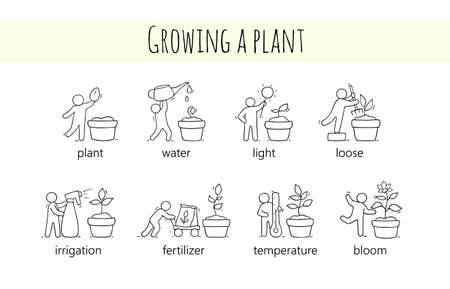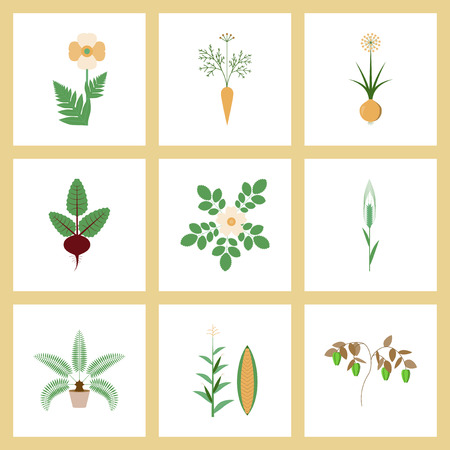1. Choosing the Right Herbs for Indoor Growing
Growing herbs indoors under grow lights is a great way to keep fresh, flavorful ingredients at your fingertips all year long. But not all herbs are equally suited for indoor environments. Here’s a look at some of the best herbs to grow indoors with grow lights, along with their growth habits, flavor profiles, and common culinary uses.
Basil
Growth Habit: Fast-growing annual that loves warmth and bright light.
Flavor Profile: Sweet, slightly peppery, with a hint of clove.
Culinary Uses: Essential in pesto, tomato-based sauces, salads, and sandwiches.
Thyme
Growth Habit: Low-growing perennial; prefers moderate light and good air circulation.
Flavor Profile: Earthy, slightly minty and lemony.
Culinary Uses: Perfect for seasoning meats, soups, stews, and roasted vegetables.
Parsley
Growth Habit: Biennial herb often grown as an annual; needs consistent moisture.
Flavor Profile: Fresh, slightly bitter with a clean finish.
Culinary Uses: Great as a garnish or ingredient in salads, tabbouleh, sauces, and marinades.
Oregano
Growth Habit: Hardy perennial; thrives under strong light.
Flavor Profile: Bold and slightly bitter with a warm aroma.
Culinary Uses: Common in Italian and Mediterranean dishes like pizza, pasta sauces, and grilled meats.
Mint
Growth Habit: Vigorous spreader; best grown in its own container to prevent it from overtaking other plants.
Flavor Profile: Cool and refreshing with a sweet undertone.
Culinary Uses: Ideal for teas, desserts, cocktails like mojitos, and savory dishes like lamb or tabbouleh.
Herb Comparison Table
| Herb | Growth Habit | Light Needs | Flavor Notes | Common Uses |
|---|---|---|---|---|
| Basil | Fast-growing annual | High light | Sweet, peppery | Pesto, sauces, salads |
| Thyme | Low-growing perennial | Moderate to high light | Earthy, lemony | Soups, meats, veggies |
| Parsley | Biennial (grown as annual) | Moderate light | Fresh, slightly bitter | Garnish, salads, sauces |
| Oregano | Hardy perennial | High light | Bold, slightly bitter | Pizza, pasta, grilled meats |
| Mint | Vigorous spreader | Moderate to high light | Cool, sweet undertone | Teas, desserts, cocktails |
Selecting the right herbs is the first step toward building your indoor herb garden. Choose varieties based on how much light you can provide and how you plan to use them in your cooking. Each herb brings its own personality to your kitchen — both in flavor and in how it grows under lights.
2. Selecting and Setting Up Grow Lights
When growing herbs like basil, thyme, parsley, or mint indoors year-round, choosing the right grow light and setting it up properly is essential. Since sunlight can be limited indoors—especially in winter—grow lights provide the energy your herbs need to thrive.
Understanding Different Types of Grow Lights
There are several types of grow lights available for indoor gardening. Each type has its pros and cons. Heres a quick comparison to help you decide which one suits your needs best:
| Type of Grow Light | Pros | Cons |
|---|---|---|
| LED (Light Emitting Diode) | Energy-efficient, long-lasting, low heat output, full-spectrum options available | Higher upfront cost |
| Fluorescent (T5 or CFL) | Affordable, widely available, good for leafy herbs | Shorter lifespan than LEDs, more heat produced |
| Incandescent | Cheap and easy to find | Inefficient, high heat output, not ideal for most herbs |
Choosing the Right Light Spectrum
If you want your herbs to grow strong and flavorful, look for full-spectrum lights. These mimic natural sunlight and support all stages of plant growth—from germination to harvest. Many LED grow lights are now labeled as “full-spectrum,” making them a great all-in-one choice for indoor herb gardens.
How to Set Up Your Grow Lights
1. Positioning the Lights
Place the grow lights about 6–12 inches above your herbs. The exact distance depends on the type of light—LEDs usually need to be farther away than fluorescent bulbs because they’re more intense. Make sure the light covers all parts of your herb containers evenly.
2. Duration of Light Exposure
Most herbs need around 12–16 hours of light per day. You can use a timer to automate this schedule so your plants get consistent lighting without any hassle.
3. Safety Tips
- Avoid placing lights too close to plants—this can cause leaf burn.
- Ensure proper ventilation to prevent overheating.
- Keep cords and fixtures dry and secure to avoid accidents.
Quick Setup Checklist
| Task | Status |
|---|---|
| Select appropriate grow light (LED or Fluorescent) | ✓ |
| Mount light fixture above herb containers (6–12 inches) | ✓ |
| Set timer for 12–16 hours per day | ✓ |
| Check temperature and airflow around lights regularly | ✓ |
With the right grow lights and setup in place, your indoor herb garden can flourish no matter what season it is outside.

3. Potting, Soil, and Drainage Essentials
When growing herbs like basil, thyme, and oregano indoors under grow lights, getting your potting setup right is key to healthy plants. The right container, soil mix, and drainage system will help prevent root rot and overwatering—two of the most common problems indoor gardeners face.
Choosing the Right Pots
Not all pots are created equal. For indoor herbs, it’s best to use containers that allow excess water to escape easily. Here are some popular options:
| Pot Type | Pros | Cons |
|---|---|---|
| Terra Cotta | Breathable; helps prevent overwatering | Dries out quickly; can crack in cold temps |
| Plastic Pots | Lightweight; retains moisture longer | Poor air circulation for roots |
| Ceramic with Drain Hole | Attractive; good for decor and function | Heavier and more expensive |
Best Potting Mixes for Indoor Herbs
A high-quality potting mix is different from garden soil—it’s lighter, drains better, and is ideal for container gardening. Look for mixes labeled “indoor” or “container” potting mix. Many indoor herb growers prefer blends that include ingredients like:
- Coconut coir or peat moss: Improves moisture retention without waterlogging roots.
- Perlite or vermiculite: Helps with aeration and drainage.
- Compost: Provides a gentle nutrient boost.
Avoid Using Garden Soil Indoors
Garden soil is too dense for containers and often contains pests or pathogens not suited for indoor environments. Stick with sterile, well-draining potting mixes designed for indoor use.
Drainage: A Must-Have Feature
No matter what kind of pot you choose, it must have at least one drainage hole at the bottom. This prevents excess water from sitting at the base of the pot and causing root rot. Placing a saucer underneath will catch any runoff and protect your furniture or windowsill.
Pro Tip:
If your favorite decorative pot doesn’t have a hole, consider using it as a cachepot—place a smaller plastic container with drainage inside it so you get the look you want without sacrificing plant health.
With the right combination of pots, soil, and drainage practices, your indoor herb garden can thrive year-round under grow lights—giving you fresh flavor at your fingertips anytime.
4. Daily Care and Maintenance Tips
Growing herbs like basil, thyme, parsley, and mint indoors under grow lights can be easy and rewarding with a little daily care. Here’s how to keep your indoor herb garden thriving all year round.
Watering Schedule
Overwatering is one of the most common mistakes when growing herbs indoors. Most herbs prefer slightly moist but not soggy soil. Stick your finger about an inch into the soil—if it feels dry at that depth, its time to water.
| Herb | Watering Frequency |
|---|---|
| Basil | Every 2-3 days or when top inch of soil is dry |
| Thyme | Once a week; allow soil to dry out between watering |
| Mint | Every 2-3 days; keep soil consistently moist |
| Parsley | Every 3 days or as needed based on soil dryness |
Lighting Duration
Most indoor herbs need 12 to 16 hours of light each day. Use a timer with your grow lights to maintain a consistent schedule. Position the lights about 6–12 inches above the plants and adjust as they grow.
Recommended Light Duration Table:
| Herb | Daily Light Hours |
|---|---|
| Basil | 14-16 hours |
| Thyme | 12-14 hours |
| Mint | 12-14 hours |
| Parsley | 14-16 hours |
Fertilization Strategies
Your herbs will need a bit of nutrition to stay healthy. Use a balanced liquid fertilizer diluted to half strength every two weeks. Avoid over-fertilizing, which can lead to weak growth and loss of flavor.
Tip:
If leaves turn yellow or growth slows down, it might be time for a feeding.
Identifying Signs of Stress or Pests
Check your herbs daily for signs of stress or pests. Early detection is key to solving problems before they get out of control.
| Sign | Possible Cause | Solution |
|---|---|---|
| Drooping Leaves | Underwatering or overwatering | Check soil moisture and adjust watering schedule |
| Pale Leaves | Lack of nutrients or insufficient light | Add diluted fertilizer or increase light duration |
| Tiny Webs or Sticky Leaves | Pests like spider mites or aphids | Wipe leaves with soapy water or use insecticidal spray safe for edibles |
A few minutes each day checking on your herbs will go a long way in keeping them healthy and productive indoors under grow lights.
5. Harvesting and Using Your Fresh Herbs
Once your indoor herbs have grown lush under your grow lights, it’s time to enjoy the fruits of your labor. Knowing when and how to harvest is key to keeping your plants healthy and productive all year round.
When to Harvest
The best time to start harvesting herbs like basil, thyme, parsley, and oregano is once the plant has enough leaves to maintain growth after cutting. For most herbs, this means waiting until the plant is at least 6 inches tall.
| Herb | Ideal Harvest Time | Harvesting Tips |
|---|---|---|
| Basil | When the plant is 6–8 inches tall | Pinch off leaves from the top to encourage bushy growth |
| Thyme | Before it flowers for best flavor | Snip stems just above a leaf node |
| Parsley | When stalks have three segments | Cut outer stems near the base first |
| Oregano | Just before flowering begins | Harvest in small bunches by trimming stems |
How to Harvest Without Harming the Plant
Always use clean scissors or garden snips when harvesting. Avoid taking more than one-third of the plant at a time—this allows it to recover quickly and continue growing. Regular trimming actually encourages many herbs to become fuller and produce more leaves.
Using Your Herbs in Everyday Cooking
Your freshly harvested herbs can add vibrant flavor to almost any meal. Here are a few simple ways to incorporate them:
- Basil: Add fresh leaves to pasta dishes, pizza, or make homemade pesto.
- Thyme: Great for seasoning roasted meats, soups, and stews.
- Parsley: Use as a garnish or mix into salads, tabbouleh, or sauces.
- Oregano: A staple for Italian dishes, marinades, and dressings.
Preserving Extra Herbs
Drying Herbs
Tie small bundles of herbs together and hang them upside down in a warm, dry place away from direct sunlight. Once fully dried, crumble the leaves and store them in airtight containers.
Freezing Herbs
You can also freeze herbs for later use. Chop the leaves and place them in ice cube trays with a bit of water or olive oil. Once frozen, transfer cubes to freezer bags and use as needed in cooked dishes.
Quick Tip:
If youre freezing woody herbs like thyme or rosemary, you can freeze whole sprigs and remove the leaves as needed during cooking.
Caring for your indoor herb garden includes regular harvesting and smart usage. With these tips, you’ll enjoy fresh flavor all year long—and keep your plants thriving too.


